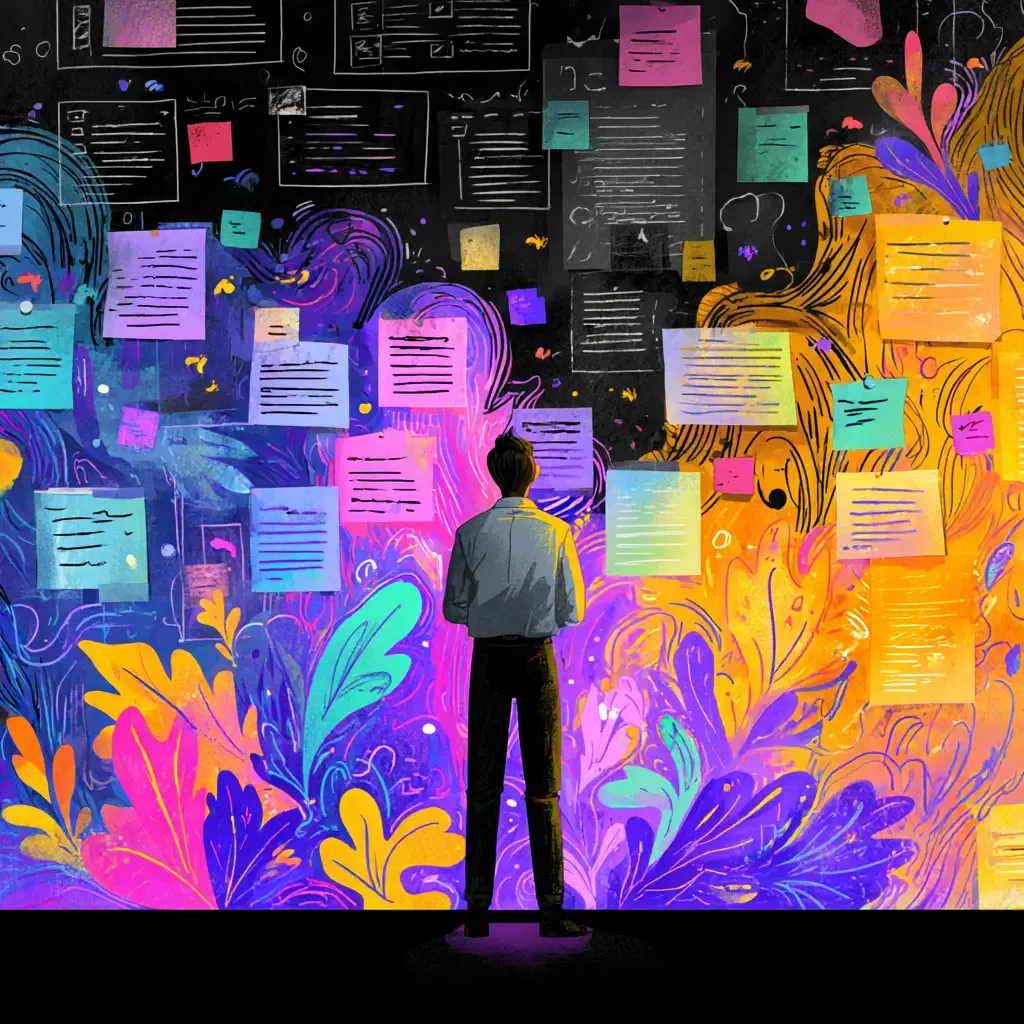Why This Hit Home
When we first published this piece inside Moreover Issue #2, the response was immediate—and unusually personal. Messages poured in from change leads, consultants, and embedded practitioners, all echoing the same thing: "This is my life."
They weren’t just reading an article; they were seeing their own org charts, inboxes, and late-night Teams messages reflected back at them. The solo seat is real. And far too common.
So we’ve pulled this section out and expanded it for everyone who’s ever had to lead change without a net. It’s not pretty, but it’s real—and it just might help you stay in the game a little longer.
I. Welcome to the Solo Seat
The org chart says it all: sponsors, project managers, SMEs, tech leads, and a dozen workstreams. Then, in the bottom corner - one lonely line: Change Management - [your name here]. You’re not just on an island - you are the island.
This setup is more common than it should be. Organizations are tackling multi-million-dollar transformations and assigning one person - maybe two, if you're lucky - to handle all things change-related. No team. No backup. No illusion that this is going to be easy.
This isn’t a complaint. It’s a reality. One that a lot of us are navigating. And while it’s not how high-performing change management is supposed to work, it doesn’t mean you can’t succeed. You just have to work differently than the books and frameworks suggest.
II. Why Skeleton Crews Are the Norm (Not the Exception)
It’s tempting to treat the “solo OCM” role as an anomaly. But it’s more often the default than the deviation. Why? Because organizational change management is still misunderstood, under-measured, and historically underrepresented in C-suite conversations.
In many companies, change management was added late - an afterthought tucked under HR, L&D, or project management. Because of that lineage, it was rarely given strategic budget authority. Instead of being staffed like cybersecurity or Agile coaching teams, OCM is seen as a reactive resource that can be called upon if things get messy.
We’re also up against a visibility problem. Change work doesn’t always show results in the same way a product launch or a cost-saving initiative does. You don’t see "readiness" on a dashboard. But when readiness is missing, you feel it everywhere - delayed launches, confused customers, burned-out teams.
To make things worse, consulting firms and internal stakeholders sometimes reinforce the myth that "one change lead should be enough" for massive initiatives. That mindset bakes in failure before the work even begins. Until we change the structure, we’ll keep seeing skeleton crews expected to deliver enterprise-wide shifts.
III. This Isn’t Sustainable, But It Is Navigable
Let’s start by naming what this isn’t. It isn’t a long-term staffing model. It isn’t a sign that your role is truly valued yet. And it isn’t fair.
But it is an opportunity to show the organization what good change leadership looks like under pressure. You’re not here to do everything. You’re here to orchestrate, not to own. That mindset shift - though subtle - is everything.
Change is ultimately a distributed capability. Your job is not to singlehandedly deliver change. It’s to enable the system to change itself - even if that system doesn’t yet understand what that means. You’ll have to model it before you can scale it. And you’ll need to pace yourself. The long game matters more than the daily win.
Sometimes that means accepting triage over perfection. Sometimes it means focusing on creating reusable infrastructure rather than perfect deliverables. And sometimes it means walking away from certain asks to protect your capacity for the ones that matter most.
IV. Focus on the Three Highest Leverage Points
When you don’t have time, team, or budget to do it all, you need to prioritize like your credibility depends on it - because it does.
A) Sponsorship Alignment
Misaligned sponsors will unravel even the best-built strategies. Your job isn’t to write their talking points - it’s to ensure they’re rowing in the same direction. Facilitate alignment sessions. Play back what you hear. Keep them honest about the gaps. This isn’t a one-and-done - it’s an ongoing discipline.
Common trap: Leaders nod along but act in silos.
Workaround: Use alignment maps to visualize divergences and make misalignment visible without blame.
B) Change Impact Clarity
A change impact analysis isn’t just a box to check. It’s your secret weapon. When you’re the only OCM person, having crystal-clear documentation of what’s changing, for whom, and when becomes your single source of leverage. It allows you to anchor communications, training, leadership briefings, and risk mitigation plans to a shared understanding of reality.
Common trap: Impacts are generalized (“everyone is affected”) and lose strategic utility.
Workaround: Prioritize tiered impact levels and align them to role clusters and business processes.
C) Communication Infrastructure
You don’t need a flashy comms plan - you need a repeatable, adaptable system. Create a messaging rhythm others can plug into. Give leaders and managers usable formats. Build just enough structure so others can own distribution without bottlenecking you.
Common trap: Becoming the only person who can send updates.
Workaround: Build templated cascades and enable others to own pieces of the narrative.
V. Become a Force Multiplier
When you're the only one doing change, you must resist the urge to own everything. That instinct - born of care and control - will exhaust you and limit the program’s reach. Instead, become a scaler, a builder of tools, and a lender of credibility.
Start small:
- Develop templates for key change moments (impact comms, talking points, FAQs).
- Deliver micro-coaching to leaders and PMs - one conversation at a time.
- Create a library of plug-and-play assets that anyone in the program can use.
Your real impact is in how you embed change capabilities across the org. Success isn’t about what you produce - it’s about what others do differently because of you.
If you leave and everything collapses, that’s not a legacy. That’s a single point of failure. Don’t be a bottleneck. Be a builder.
Force multipliers also track replication. Who else is using your templates? Who’s quoting your talking points? Who’s requesting your help because they saw the impact somewhere else? That’s how you know the work is scaling.
VI. Protect the Asset (That’s You)
Let’s talk burnout - and why it’s often self-inflicted in this role.
When you’re a team of one, the reflex is to over-deliver. You want to prove that change management matters. You want to show you're not just overhead. But chasing value through overwork is a trap. Eventually, you become a cautionary tale instead of a trusted voice.
Here’s the mindset shift: you are not just a resource. You are a finite asset with strategic value. And assets need to be protected.
Set non-negotiables:
- Block time to think- not just to produce.
- Track the hours you’re working across requests.
- Document scope creep when it happens.
- Escalate resourcing gaps in real time - not six weeks after you’re underwater.
Saying no - or “not yet”- isn’t selfish. It’s professional. It gives the organization a clear signal about the cost of under-resourcing change. And it models the very boundaries we want our stakeholders to practice.
It’s also worth investing in peer support - whether it’s an external coaching circle, a Slack community, or even just a friend who “gets it.” You can’t operate sustainably if you’re never seen, never validated, and never recharged.
VII. Real Talk
I’ve been the solo change person more times than I can count. Some days I was the trusted advisor, influencing across silos. Other days, I was the afterthought, tagged late in the project and expected to “make it palatable.” You have to be both resilient and strategic in that space.
The turning point? Realizing I wasn’t there to prove change management mattered - I was there to help the organization mature. That meant less heroics and more influence. Less crafting the perfect plan and more enabling others to act with intention.
You won’t get applause for most of it. But you will leave behind a smarter, stronger system than the one you walked into.
VIII. Final Thought
Being the only change person on a big program isn’t a flaw - it’s a signal. A signal that the organization is still learning what good change support looks like. Your presence is the first step.
Don’t waste it trying to do everything. Scale what matters. Leave breadcrumbs others can follow. And protect your energy for the next opportunity - because they’re going to need you again.
Made it this far? You might be one of us.
If you’ve ever held the line as a solo CM practitioner - wearing every hat, managing every ask, translating chaos into clarity - you’re part of the Skeleton Crew.
We see you. And we’ve got a little something for you. Claim your secret reward.
You’re Not Actually Alone
If this article felt a little too close to home, that’s the point. You’re not broken, or doing it wrong. You’re just navigating a system that’s still catching up to what change work really requires.
And while it might feel like you’re the only one doing it all, you’re far from alone. There’s a whole community of Skeleton Crew veterans out there—people who’ve held the line, scaled without support, and lived to tell the tale. We’re glad you found this. We hope it helps.
And we hope you’ll stick around, because what you’re building matters more than you know.
ChangeGuild: Power to the Practitioner™







